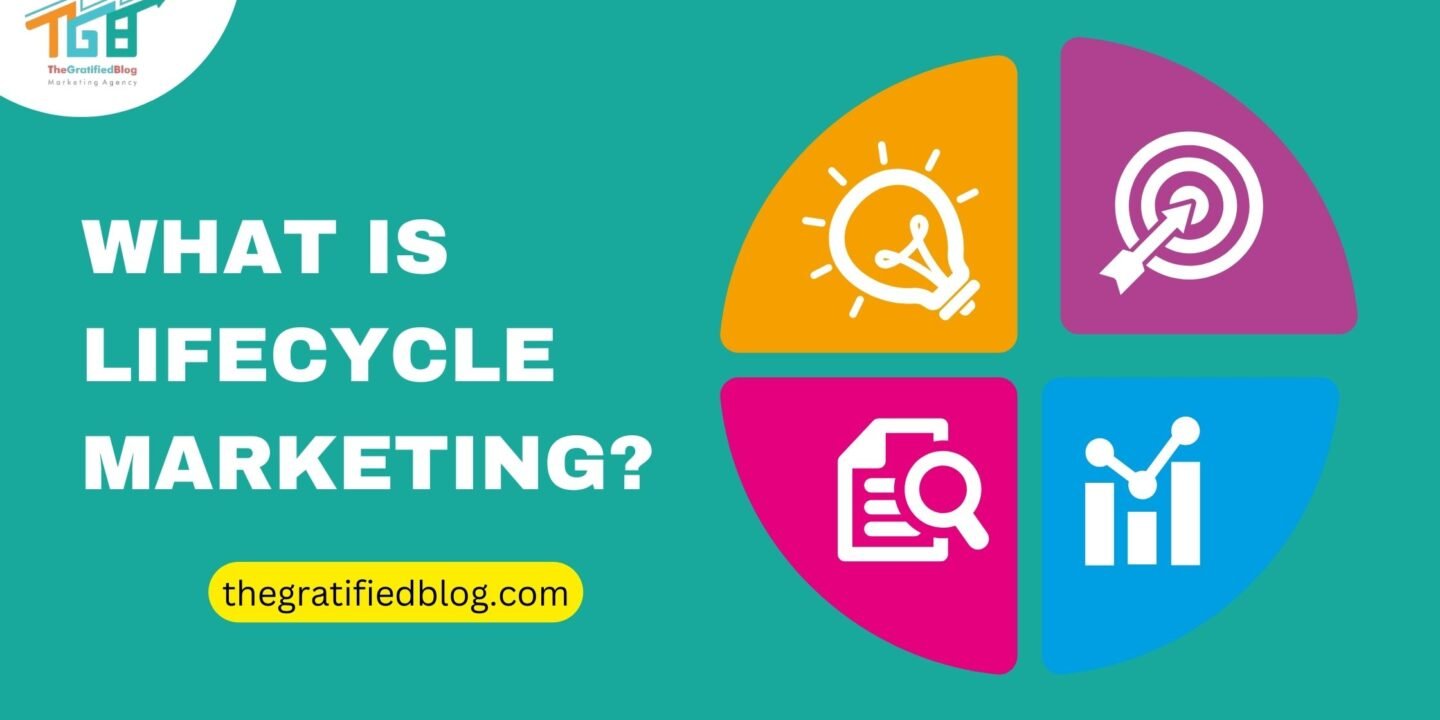
“What is Lifecycle Marketing?” It is a strategic approach that focuses on engaging and nurturing customers throughout their entire journey with a company. Rather than just concentrating on acquiring new customers, it considers the different stages of a customer’s relationship with a business, from initial awareness to repeat purchases and loyalty. By understanding the customer lifecycle marketing model and implementing targeted strategies at each stage, companies can build relationships, increase customer satisfaction, and drive long-term revenue growth. In this article, we will explore this marketing concept in detail and discuss its benefits and best practices for implementation.
What Is Customer Lifecycle Marketing?
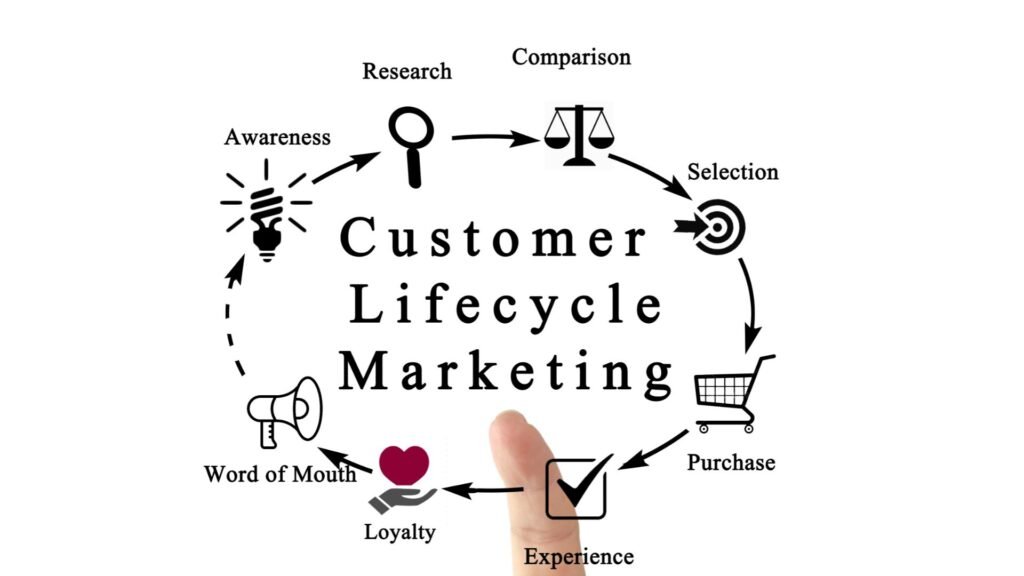
Customer lifecycle marketing is a strategic approach that focuses on understanding and engaging customers at every stage of their journey with a brand. From initial awareness to post-purchase loyalty, each phase presents unique opportunities for businesses to connect with their audience, deliver value, and foster long-term relationships.
At its core, this marketing recognizes that the customer journey is not linear but a dynamic and evolving process. By mapping out the various stages—awareness, consideration, conversion, retention, and advocacy—businesses can tailor their marketing efforts to meet customers’ specific needs and preferences at each phase.
This marketing is more than just acquiring customers; it’s about building meaningful connections and delivering value at every journey stage. By understanding the needs and behaviors of their audience and aligning their marketing efforts accordingly, businesses can create memorable experiences, drive customer loyalty, and achieve long-term success in today’s competitive landscape.
By understanding this marketing concept and implementing targeted strategies at each stage, businesses can effectively engage and nurture customers, ultimately leading to long-term success and growth.
The Stages Of Lifecycle Marketing
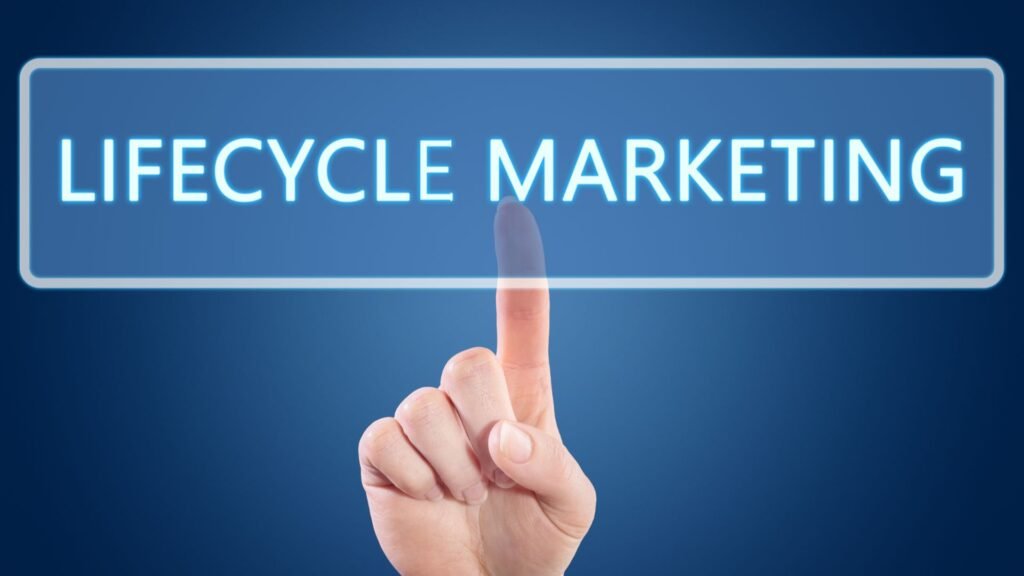
In this marketing, there are specific stages that businesses need to focus on to engage and nurture customers effectively. These stages are essential for building strong customer relationships and driving long-term success.
The first stage is the awareness stage, where businesses aim to create brand awareness and capture the attention of potential customers. This stage involves making a good first impression and introducing customers to the products or services offered.
Once customers are aware of a business, they enter the consideration stage. Here, they evaluate different options and decide whether to make a purchase. Companies must provide valuable information, personalized recommendations, and exceptional customer service to convince customers to choose their offerings.
The purchase stage is when the customer completes a transaction and becomes a paying customer. However, businesses should continue. Instead, they should focus on nurturing the customer relationship to encourage repeat purchases and loyalty.
Lastly, businesses aim to turn customers into brand advocates in the loyalty stage. This is achieved by providing outstanding customer experiences, personalized offers, and loyalty programs. By cultivating loyalty, businesses can inspire customers to become advocates and generate positive word-of-mouth.
Benefits Of Implementing Lifecycle Marketing Strategies

Implementing this marketing strategy can offer numerous benefits to businesses across various industries. Here are some key advantages:
Increased Customer Engagement
It allows businesses to engage with customers at every stage of their journey, from initial awareness to post-purchase support. Companies can keep customers engaged and interested in their products or services by delivering targeted and relevant content or offers.
Improved Customer Retention
By understanding where customers are in their lifecycles, businesses can tailor their marketing efforts to nurture and retain existing customers. By providing value-added content, personalized recommendations, and excellent customer service, companies can build stronger customer relationships, increasing loyalty and retention.
Higher Customer Lifetime Value
Businesses can increase their customers’ lifetime value by effectively managing the customer lifecycle. Companies can maximize the revenue generated from each customer over their lifetime by upselling, cross-selling, and retaining customers for extended periods.
Better Customer Segmentation
It allows businesses to segment their customer base more effectively based on where customers are in their journey. This enables enterprises to deliver more targeted and personalized marketing messages, offers, and experiences, which are more likely to resonate with specific audience segments.
Optimized Marketing Spend
Businesses can allocate their marketing budget more efficiently by focusing marketing efforts on different stages of the customer lifecycle. Instead of using a one-size-fits-all approach, companies can prioritize spending on activities and channels most effective at each stage of the lifecycle, resulting in a higher return on investment (ROI).
Data-Driven Insights
It relies heavily on data analysis and tracking customer behaviour throughout their journey. By collecting and analyzing data on customer interactions, businesses can gain valuable insights into customer preferences, behaviours, and pain points. These insights can inform future marketing strategies and help companies make data-driven decisions to improve customer experiences and drive business growth.
Streamlined Sales Processes
Automating specific tasks and workflows can help businesses streamline their sales processes. By implementing marketing automation tools, companies can deliver timely and relevant communications to customers at each stage of the lifecycle, freeing up time for sales teams to focus on high-value activities such as lead nurturing and closing deals.
Alignment Across Teams
It encourages collaboration and alignment across different organisational teams, including marketing, sales, customer service, and product development. By understanding the customer journey holistically, teams can work together to deliver a seamless and cohesive customer experience.
Adaptability And Scalability
Its adaptable and scalable strategies allow businesses to adjust their approach based on changing market conditions, customer preferences, and business goals. This flexibility ensures that marketing efforts remain practical and relevant over time.
Implementing this marketing strategy can help businesses build stronger customer relationships, drive revenue growth, and achieve long-term success in today’s competitive marketplace.
Lifecycle Marketing Plan

Developing a marketing plan involves understanding your customers’ journey from awareness to advocacy and crafting tailored strategies to effectively engage them at each stage. Here’s a framework for creating a marketing plan:
Define Customer Lifecycle Stages:
- Awareness: When customers become aware of your brand, product, or service.
- Consideration: When customers evaluate your offering and compare it to alternatives.
- Purchase: When customers make a purchase and become paying customers.
- Post-Purchase: After the purchase, when you aim to retain, upsell, and delight customers.
- Advocacy: When satisfied customers become promoters of your brand.
Understand Customer Needs and Behaviors:
- Conduct market research and surveys and analyze customer data to understand their needs, pain points, and preferences at each lifecycle stage.
- Use tools like customer journey mapping to visualize the customer experience and identify areas for improvement.
Develop Content and Messaging:
- Create targeted content and messaging aligned with each lifecycle stage.
- Use educational content to raise awareness, product comparisons for consideration, testimonials and reviews to build trust post-purchase, and exclusive offers for advocates.
Select Communication Channels:
- Choose appropriate channels to reach customers at each stage (e.g., social media, email, website, events).
- Consider using marketing automation tools to streamline communication and personalize messages based on customer behaviour.
Set Goals and KPIs:
- Define specific, measurable goals for each lifecycle stage (e.g., increase awareness, improve conversion rates, reduce churn).
- Identify key performance indicators (KPIs) to track progress and measure success (e.g., website traffic, email open rates, customer retention rate).
Implement Engagement Strategies:
- Awareness: Use content marketing, social media, and SEO to attract and educate potential customers.
- Consideration: Offer product demonstrations, free trials, and comparison guides to help customers make informed decisions.
- Purchase: Simplify the purchasing process and provide excellent customer support to encourage conversions.
- Post-Purchase: Implement loyalty programs, collect feedback, and provide proactive customer service to drive retention and upsells.
- Advocacy: Encourage satisfied customers to leave reviews, participate in referral programs, and share their experiences with others.
Measure and Optimize Performance:
- Regularly monitor KPIs and analyze the effectiveness of your marketing strategies.
- Use A/B testing and data analysis to identify areas for improvement and optimize your approach over time.
Iterate and Adapt:
- Continuously refine your marketing plan based on customer feedback, market trends, and business objectives.
- Stay agile and be willing to experiment with new tactics and strategies to stay ahead of the competition.
By following these steps, you can create a comprehensive marketing plan that effectively engages customers at every stage of their journey and drives sustainable growth for your business.
Lifecycle Marketing Best Practices
Now that we have explored some examples of successful lifecycle marketing campaigns let’s dive deeper into the best practices for implementing these strategies. By following these guidelines, you can ensure the effectiveness and impact of your marketing efforts.
- Customer Segmentation: To deliver personalized and targeted campaigns, it is essential to segment your customer base. You can create tailored messages that resonate with each segment by categorizing customers based on their behaviours, preferences, and demographics.
- Automation: Utilize marketing automation tools to streamline your marketing efforts. Automated emails, triggered by specific customer actions or milestones, allow you to engage with customers at the right time, delivering relevant content and offers.
- Data Analysis: Regularly analyze your customer data and campaign results to gain insights into their preferences and behaviours. This data-driven approach will help refine your marketing strategies and make data-backed decisions.
- Continuous Testing and Optimization: Experiment with different approaches and continuously test and optimize your campaigns. Tracking key metrics and analyzing the results can uncover what works best for your unique customer base and maximize your campaign’s impact.
- Cross-Channel Integration: Integrate your marketing efforts across multiple channels to ensure a cohesive and consistent customer experience. You can reach customers at various touchpoints and create a seamless journey by utilizing channels such as emails, social media, and mobile notifications.
Implementing these best practices can elevate your marketing strategies and drive meaningful results.
Monitoring The Effectiveness Of Your Lifecycle Marketing Efforts

One of the critical aspects of implementing a successful marketing strategy is monitoring and measuring its effectiveness. Regularly tracking and analyzing key metrics, you can understand your campaigns’ performance and make data-driven decisions to optimize them further.
To effectively monitor and measure your marketing efforts, consider the following:
- Set clear and specific goals: Establish goals that align with your overall business objectives before implementing any campaign. These goals could be increasing customer retention rates, improving customer satisfaction levels, or boosting revenue from existing customers.
- Define relevant metrics: Identify the metrics directly connected to your goals. For example, if your goal is to increase customer retention, metrics such as churn rate, customer lifetime value, and repeat purchase rate would be relevant indicators to track.
- Utilize analytics tools: Invest in analytics tools that can help you gather and analyze the data related to your campaigns. These tools can provide valuable insights into customer behaviour, campaign performance, and the impact of different tactics.
- Regularly review and optimize: Continuously monitor the performance of your marketing campaigns and review the data. Look for patterns, trends, and areas of improvement. Use this information to optimize your campaigns, experiment with new strategies, and refine your approach.
- A/B testing: Conduct A/B tests to compare the performance of different elements within your campaigns. Test variations of subject lines, call-to-action buttons, offers, and content to determine what resonates best with your customers.
- Measure customer feedback: In addition to quantitative metrics, gather qualitative feedback from your customers. Customer surveys, interviews, and social listening tools can provide valuable insights into their perceptions and preferences.
By monitoring and measuring your marketing efforts, you can identify areas for improvement, align your strategies with your business goals, and drive better results.
Conclusion
Adopting a comprehensive approach to customer relationship management in today’s competitive business landscape is essential. Lifecycle marketing offers a strategic framework for nurturing customer relationships throughout their journey with your brand.
By implementing the best practices discussed in this blog, you can effectively monitor and measure the success of your marketing campaigns. Setting clear goals, defining relevant metrics, utilizing analytics tools, and regularly reviewing and optimizing your campaigns are crucial to driving better results. Additionally, conducting A/B tests and gathering customer feedback will provide valuable insights to refine your strategies and meet your business objectives. Embracing lifecycle marketing is essential to business growth in the long run.




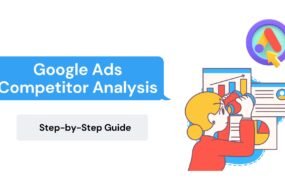
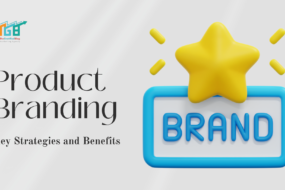


No Comments